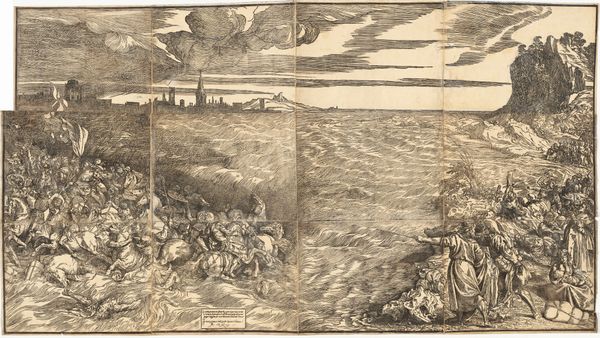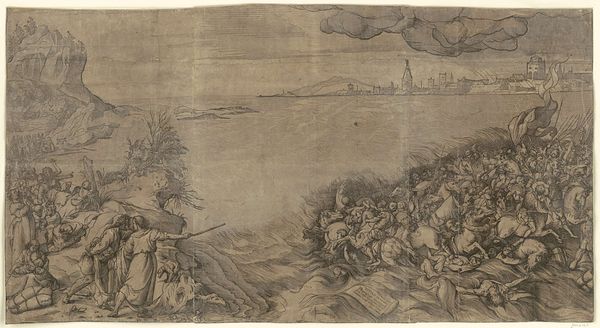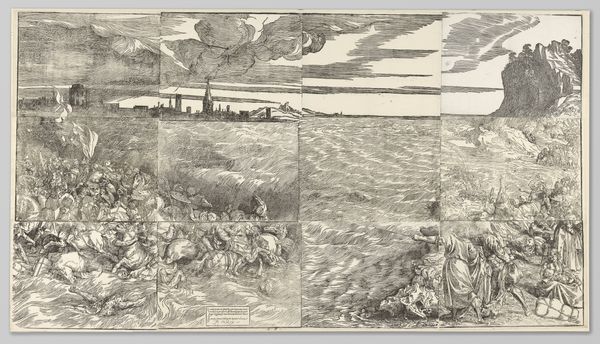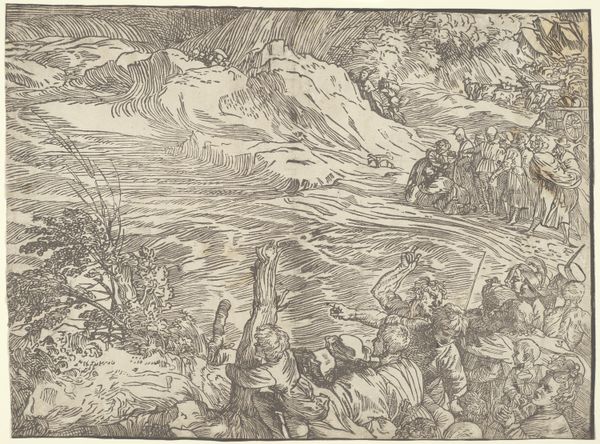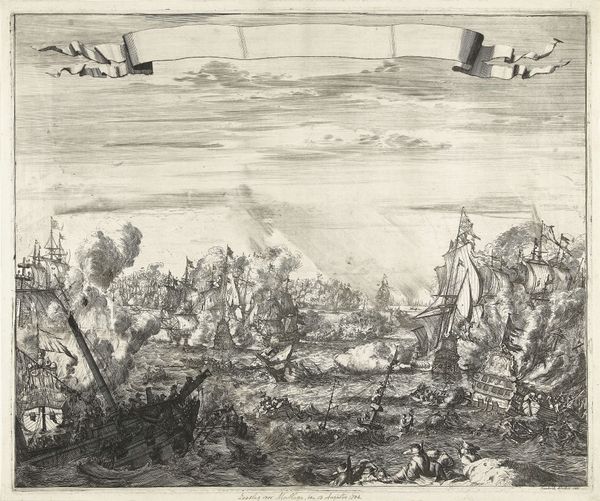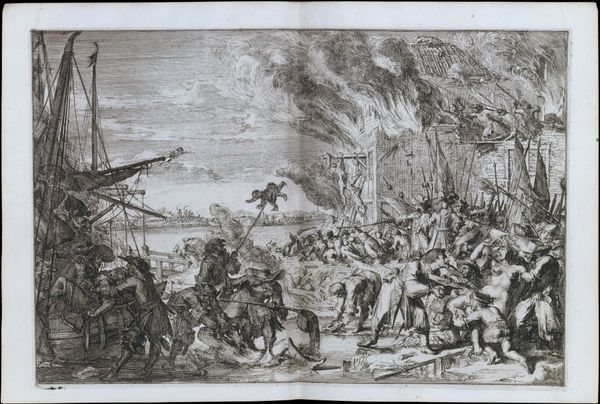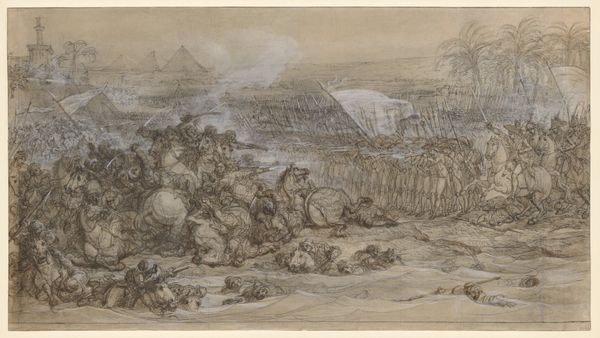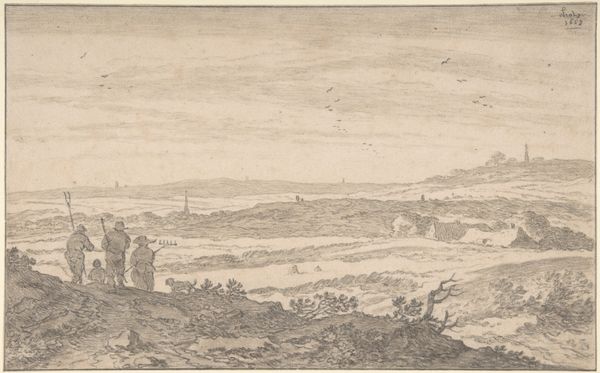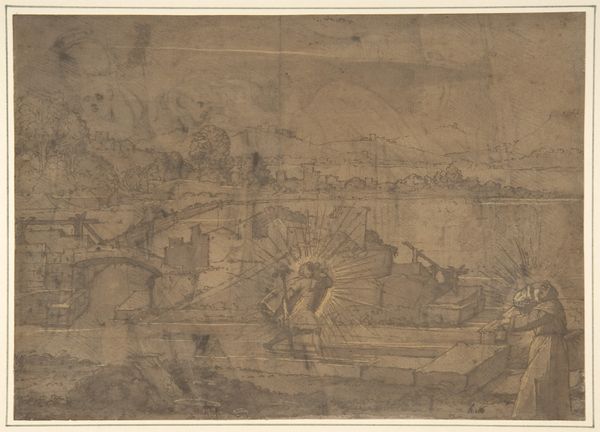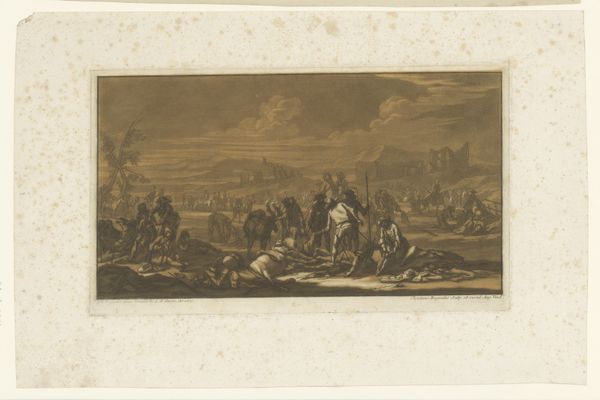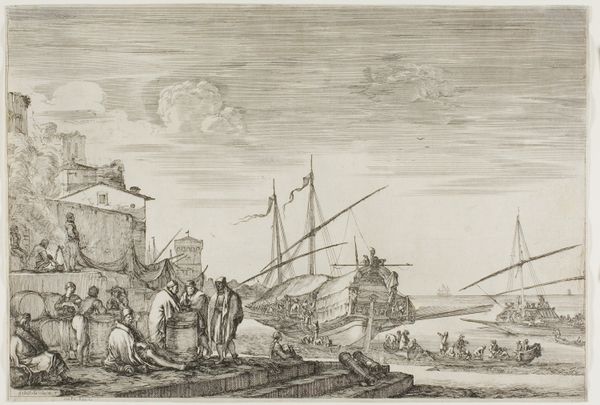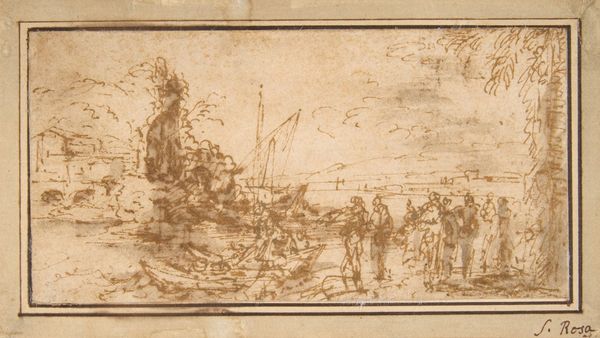
The crossing of the red sea, Moses stands at the left pointing to the army being submerged, after Titian 1589
0:00
0:00
drawing, print, engraving
#
drawing
#
narrative-art
# print
#
mannerism
#
figuration
#
line
#
history-painting
#
engraving
Dimensions: Height: 22 7/16 in. (57 cm) Width: 44 1/2 in. (113 cm)
Copyright: Public Domain
Editor: We're looking at Andrea Andreani's "The Crossing of the Red Sea," made around 1589, after Titian. It’s an engraving, currently residing at The Met. It feels almost chaotic, like a snapshot of utter pandemonium, wouldn't you agree? How would you interpret this work through a formal lens? Curator: The dynamism certainly strikes one immediately. Note the composition. It's split, but also linked, aren't those diagonals cleaving it in two? We see Moses at the left juxtaposed with the pursuing army at the right, the rising cliffs and clouds mirrored across the plane, linked by the plane of the Red Sea itself. Consider also the linework: dense hatching creating areas of deep shadow versus sparser areas that suggest relief, this dichotomy generates a striking interplay between depth and flatness, does it not? Editor: It definitely does. The lines almost create a sense of movement, pulling you in different directions. So the formal structure amplifies the chaotic narrative? Curator: Precisely. The medium, an engraving, lends itself well to precisely that effect. Each individual line is purposefully wrought, controlled; they’re instruments in service to this carefully calibrated overall effect. And observe the Mannerist tendencies, specifically its engagement with an exaggeration of form; how the compression and torsion exhibited by the figures create a certain artificiality of bodies. Are you picking up on how the image itself carries meaning beyond the surface-level representation of this event? Editor: I am. It's not just *what* is depicted, but *how* it's depicted that creates the overall impact and conveys meaning. Curator: Precisely. Focusing on line, composition, form reveals this work to be far more complex than simply an illustration of a historical event. Now do you perceive anything else anew about this work? Editor: Definitely, looking closely at those stylistic and structural decisions has given me a new perspective on how art conveys meaning, it has a formal architecture. Thank you.
Comments
No comments
Be the first to comment and join the conversation on the ultimate creative platform.
